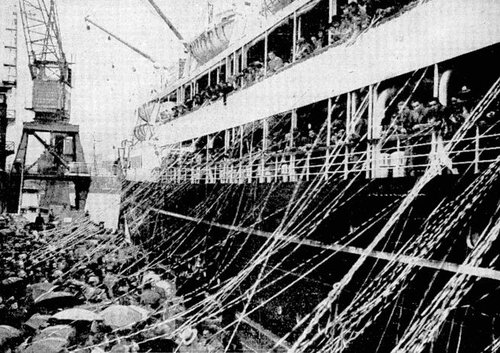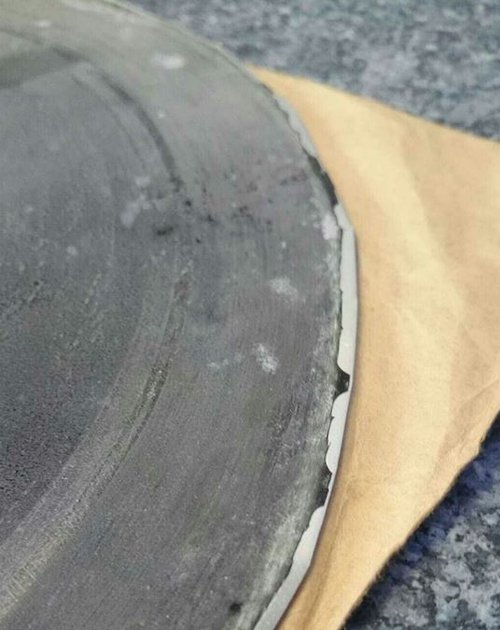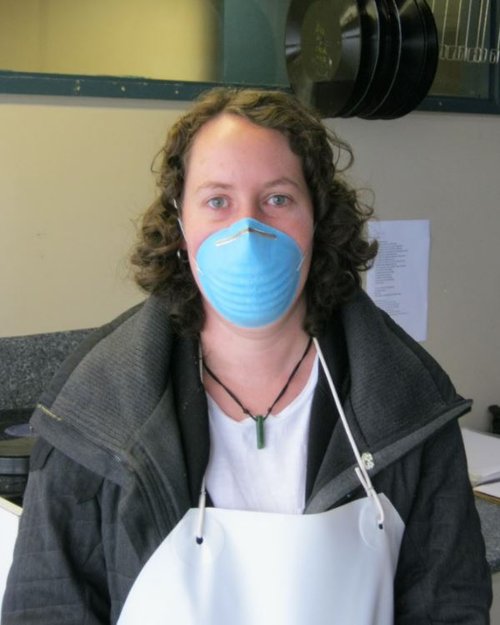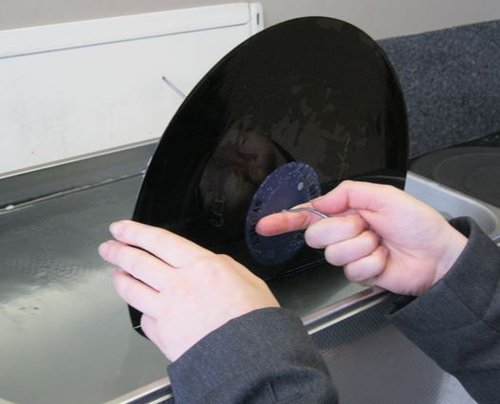
By Gareth Watkins (Ngā Taonga Sound & Vision)
The discs came from Trevor’s daughter Penelope Hansen and were recorded after the 1938 All Black tour of Australia.
Before the discs were deposited, I did some research and found that Ngā Taonga Sound & Vision already had some early recordings from that same tour in the collection – namely a short interview with the Australian and New Zealand Captains and the last 10-or-so minutes of the second test.
Hero image: The scene on the Queens Wharf last night when the Wanganella, with the All Black Rugby team to tour Australia on board, left for Sydney. (Evening Post, 08 July 1938 - Alexander Turnbull Library)

Trevor Berghan - All Black (photo courtesy of Penelope Hansen)
The Dunedin broadcaster Iain Gallaway described Trevor Berghan as:
“Beautifully built with a fine fend and elusive sidestep he was a brilliant blindside runner and is ranked by former team-mates and opponents alike […] as the best first five eighths they have played with and against.”
In this first audio excerpt All Black Captain Neville “Brushy” Mitchell and the Australian Captain Vayro Wilson talk on the eve of the Second Test.
Interviews - All Blacks vs Australia on 05 August 1938 (New Zealand Broadcasting Service)
And here’s a snippet from the end of the Second Test on 6 August 1938 in Brisbane, with a brief mention of Trevor Berghan. The All Blacks won 20-9.
Second Test in Brisbane - All Blacks vs Australia on 06 August 1938 (New Zealand Broadcasting Service)

An example of a disc with mould and cracked lacquer surface
Not the Berghan discs.
The discs donated by Trevor’s family arrived at the archive last year in a rather mouldy condition (not surprising considering they were almost 80-years-old).
Because of their fragility, I had to then hand-transport them south to our preservation team in Christchurch.

Sandy Ditchburn wearing protective clothing during the disc cleaning process
Disc preservationist Sandy Ditchburn takes up the story:
Unfortunately, these discs were affected by mould and the lacquer was cracked and frail. They all required a stringent cleaning process. Ammonium hydroxide was carefully wiped across the grooves to remove mould, dust, and residue before the discs were washed and placed into an ultrasonic bath to remove any lingering dirt. An ultrasonic bath uses ultrasound (usually from 20–400 kHz). Cleaning occurs when the soundwaves agitate a liquid, which produces high forces on contaminants adhering to substrates.

Discs being cleaned in the ultrasonic bath
A vacuum machine then dried the discs ready for preservation.

Discs drying after cleaning
One disc in particular proved difficult to preserve/digitise. The disc’s lacquer was very cracked and small amounts had flaked off. Have a listen to this short example of my initial digitisation attempt:
Trevor Berghan Interview - Sandy’s initial attempt at preservation
Given that this disc was recorded at 78 R.P.M (Revolutions Per Minute). I concluded that it would be hazardous to try and preserve it at the same speed and risk the stylus needle catching in a crack and damaging the disc further. I set my turntable to 33 1/3 R.P.M. and carefully ran through the record at a slower speed. An especially bad area of the disc required me to lift the stylus needle off of the grooves and replace it repeatedly to try and capture as much audio as possible without a crack leading it astray.
Once I had captured as much audio as possible I used an audio editor (Audacity) to increase the audio to its correct speed of 78 R.P.M. and edit the broken parts of audio together. Using this method, I managed to recover the names of two mentioned rugby players that may have otherwise been missed.
After the preservation process was complete we could then make a “supply copy” which utilised “de-click” and “de-pop” audio filters, increasing the clarity of the content. Here then is an excerpt from the 1938/39 recording where Trevor talks about his early rugby life.
Trevor Berghan Interview – following the second round of preservation work
Ngā Taonga Sound & Vision also holds film footage of an earlier Bledisloe Cup clash, from 1936. Again the All Blacks comfortably win 11 – 6.
Wallabies vs New Zealand - Bledisloe Cup (05 September 1936)
Special thanks to Sandy Ditchburn, for the photographs and helping with this blog.
This post is part of the Audio Curios series. Radio Collection Developer Gareth Watkins regularly comes across interesting, unique, and sometimes downright puzzling bits of audio during his accessioning work.